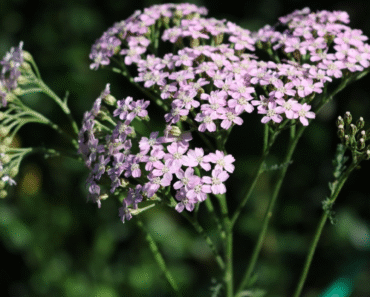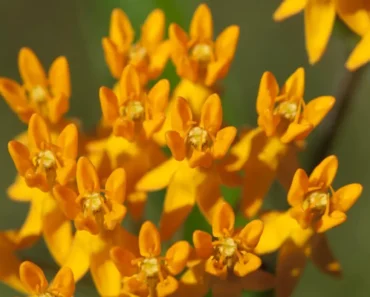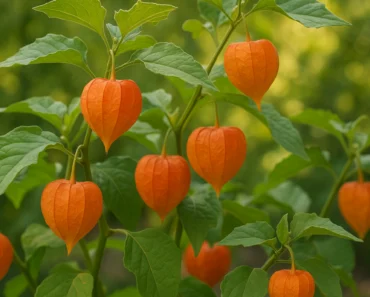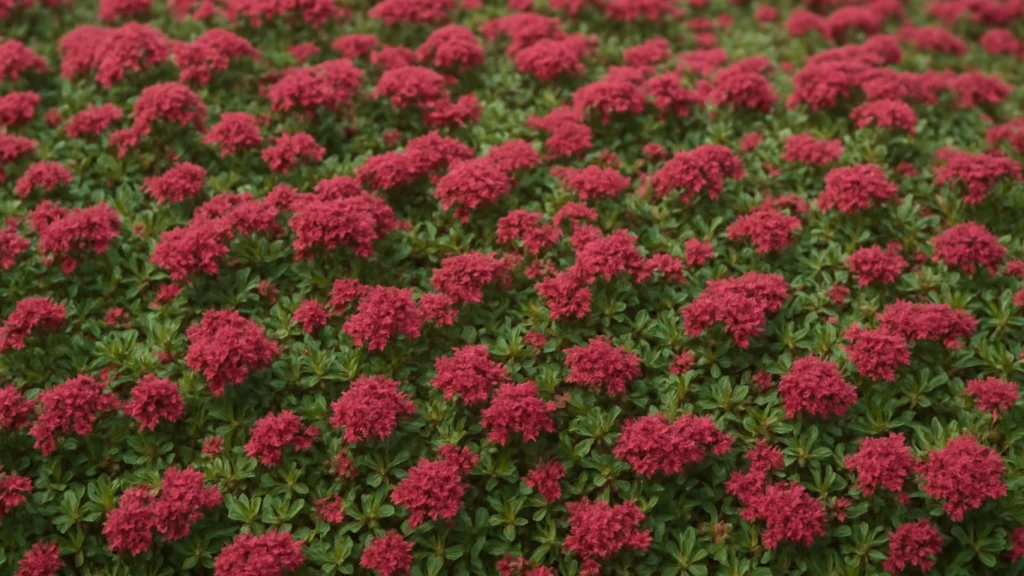
Red Creeping Thyme, particularly varieties like Thymus serpyllum ‘Coccineus’, transforms landscapes with a stunning carpet of crimson-red flowers and fragrant foliage. This definitive guide provides everything you need to know to successfully plant, grow, and enjoy this vibrant, low-maintenance groundcover that will become the jewel of your garden.
Table of Contents
Growing Red Creeping Thyme at a Glance: Key to Success
Before diving into the details of how to grow red creeping thyme, here are the essential facts every gardener needs to know:
- Botanical Names: Primarily Thymus serpyllum ‘Coccineus’, Thymus praecox ‘Coccineus’, or members of the Thymus coccineus group
- Light: Full Sun (6+ hours direct sun per day) is essential for best flowering and dense growth
- Soil: Excellent drainage is paramount. Prefers gritty, sandy, or gravelly soil. Tolerates poor soil
- Watering: Low; water moderately until established, then drought-tolerant. Avoid overwatering
- Spacing: 6-12 inches apart for groundcover
- Hardiness Zones: Typically 4-9
- Key Feature: Masses of tiny, bright crimson-red flowers in summer. Fragrant foliage
- Uses: Groundcover, rock gardens, pathways (between pavers), borders, spilling over walls
The Allure of Crimson: An Introduction to Red Creeping Thyme Varieties
What is Red Creeping Thyme?
Red creeping thyme is a low-growing perennial herb cultivar specifically prized for its spectacular crimson flower color. Unlike common culinary thyme, this thyme ground cover forms dense, spreading mats that rarely exceed 3-4 inches in height. The plant belongs primarily to the Thymus serpyllum and Thymus praecox species, with cultivars in the Thymus coccineus classification offering the most vibrant red blooms.
This Mediterranean native has been selectively bred to emphasize its ornamental qualities while maintaining the hardy, drought-resistant characteristics that make thyme such a reliable garden performer.
The Beauty of the Blooms & Foliage
The star attraction of red creeping thyme is undoubtedly its flowers. From late spring through mid-summer, the plant produces countless tiny, tubular blooms in shades ranging from deep crimson to bright cherry red. These flowers cluster densely along the stems, creating a carpet effect that can be breathtaking when viewed from above.
The foliage is equally appealing, consisting of small, oval leaves that release a pleasant, herbal fragrance when crushed underfoot. The leaves typically display a rich green color that provides excellent contrast to the vibrant blooms, though some varieties may show slight purple or bronze tinting in cooler weather.
Benefits of Planting Red Creeping Thyme
Planting creeping thyme offers numerous advantages beyond its obvious beauty:
- Drought Tolerance: Once established, red creeping thyme requires minimal watering, making it perfect for water-wise gardens
- Deer Resistance: The aromatic foliage naturally deters deer and most other garden pests
- Pollinator Magnet: Bees, butterflies, and other beneficial insects are drawn to the abundant nectar-rich flowers
- Weed Suppression: Dense growth helps prevent weeds from establishing once the thyme mat is mature
- Low Maintenance: Requires minimal care once established, perfect for busy gardeners
- Versatile Uses: Functions beautifully as groundcover, in rock gardens, between pavers, or cascading over walls
Planting Your Red Creeping Thyme: A Step-by-Step Guide to Success
Step 1: Choosing the Best Time to Plant Red Creeping Thyme
The optimal timing for planting creeping thyme is during spring after the last frost date or in early fall, approximately 6-8 weeks before your first expected frost. Spring planting allows the roots to establish during the growing season, while fall planting takes advantage of cooler temperatures and typically more consistent moisture without the stress of summer heat.
Avoid planting during the hottest part of summer or when the ground is frozen in winter.
Step 2: Selecting the Ideal Location: Sun & Drainage are King
Success with red creeping thyme begins with proper site selection. Full sun exposure is absolutely critical – your plants need at least 6 hours of direct sunlight daily, though 8+ hours is even better for maximum flowering and compact growth.
To assess sun exposure in your chosen location, observe the area throughout a full day, noting when shadows fall and how long direct sunlight hits the spot.
Drainage is equally important. Red creeping thyme cannot tolerate “wet feet” and will quickly succumb to root rot in poorly draining soil. Test your soil drainage by digging a hole 12 inches deep and filling it with water. If water remains after 24 hours, you’ll need to improve drainage by:
- Adding coarse sand, perlite, or fine gravel to heavy clay soil
- Creating raised beds or berms
- Installing drainage tiles in severely problematic areas
- Choosing a naturally well-draining slope or elevated location
Step 3: Preparing the Planting Site
Thorough site preparation is essential for establishing a healthy thyme ground cover:
- Clear all weeds completely, including roots. Since creeping thyme grows low to the ground, any remaining weeds will compete aggressively and be difficult to remove later.
- Loosen the soil to a depth of 6-8 inches using a garden fork or tiller. This improves root penetration and drainage.
- Remove any large stones or debris that might impede spreading.
- Rake the surface smooth to create an even planting bed.
Step 4: Sourcing Your Red Creeping Thyme Plants
You have several options for acquiring red creeping thyme:
Nursery Plants: Purchase small pots or plug trays from reputable nurseries. Look for plants with healthy, compact growth and avoid any showing signs of disease or pest damage.
Online Specialists: Many specialty herb and perennial nurseries offer specific cultivars with guaranteed characteristics.
Seeds: While possible, growing from seed requires more patience and may result in some color variation unless you purchase seeds from a reliable cultivar source.
Step 5: Spacing Your Red Creeping Thyme Plants
For dense groundcover that will fill in within 1-2 growing seasons, space plants 6-8 inches apart. If you’re patient and want to save money, you can space them up to 12 inches apart, though it will take longer to achieve full coverage.
Calculate your plant needs by measuring your planting area and dividing by your chosen spacing. For example, a 10×10 foot area with 8-inch spacing requires approximately 225 plants.
Step 6: The Planting Technique
Follow these steps for optimal planting results:
- Dig holes slightly wider than the root ball and exactly as deep as the nursery container
- Gently remove plants from containers, teasing apart any circled or bound roots
- Place plants at the same depth they were growing in their containers
- Backfill with native soil (avoid adding amendments to individual holes)
- Firm soil gently around each plant
- Water thoroughly immediately after planting
Step 7: Watering After Planting
Newly planted red creeping thyme needs consistent moisture for the first 4-6 weeks while roots establish. Water deeply but infrequently, allowing the soil surface to dry between waterings. Avoid overhead watering if possible, as wet foliage can encourage disease.
Step 8: Mulching (Optional, with Caveats)
While organic mulches like shredded bark should be avoided around creeping thyme, inorganic mulches can be beneficial:
- Gravel or pea stone: Improves drainage and provides an attractive contrast to the plants
- Crushed rock: Helps retain soil moisture while preventing crown rot
- Coarse sand: Aids drainage in clay soils
Apply mulch sparingly, keeping it away from plant crowns to prevent moisture retention around the base.
Nurturing Your Red Creeping Thyme: Long-Term Care for Lasting Beauty
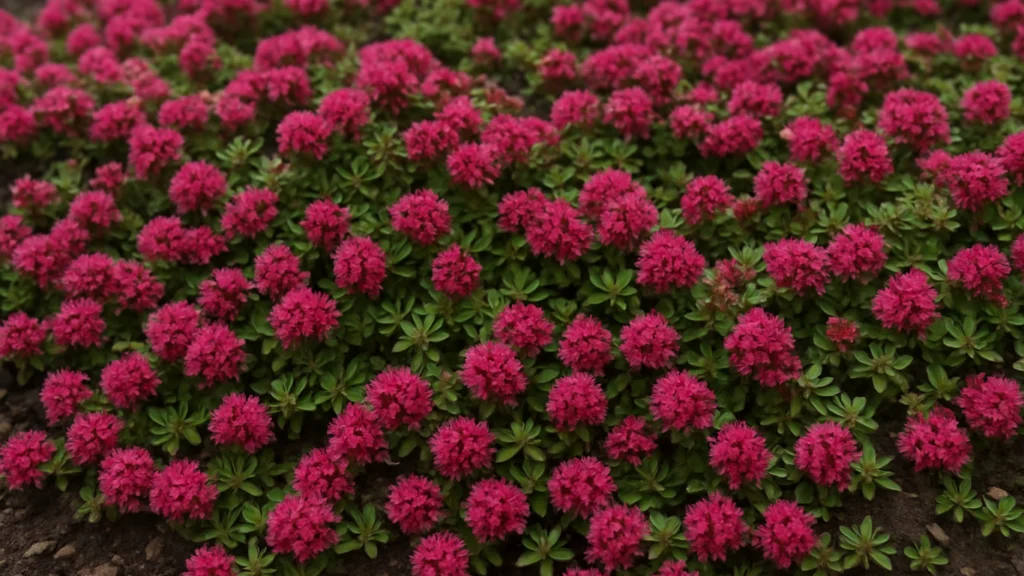
Watering Established Red Creeping Thyme
Once established (typically after the first growing season), red creeping thyme becomes remarkably drought-tolerant. In most climates, natural rainfall provides sufficient moisture. During extended dry periods, provide deep, infrequent watering rather than frequent light sprinkling.
Signs your thyme needs water:
- Foliage appears grayish or dull
- Leaves feel crispy to the touch
- Plants show signs of wilting during the hottest part of the day
Fertilizing (Generally Not Needed or Recommended)
Red creeping thyme thrives in lean, poor soils and rarely requires fertilization. In fact, over-fertilization can lead to:
- Excessive foliage growth at the expense of flowers
- Weak, leggy growth that’s more susceptible to disease
- Reduced drought tolerance
- Diminished fragrance
If your soil is extremely poor, a light application of balanced, slow-release fertilizer in early spring may be beneficial, but this is typically unnecessary.
Pruning & Trimming Red Creeping Thyme
Minimal pruning keeps your thyme ground cover looking its best:
After Flowering: Light shearing with garden shears or a string trimmer removes spent flowers and encourages dense, compact growth. Cut back by no more than one-third of the plant’s height.
Early Spring: Remove any winter-damaged or dead growth before new growth begins.
Periodic Maintenance: Every 2-3 years, you may need to trim back areas that have become too thick or woody.
Weed Control in Your Thyme Mat
Hand-weeding is essential, especially during the establishment period. Once the thyme mat is dense, it naturally suppresses most weeds, but persistent perennial weeds may require ongoing attention.
Prevention strategies:
- Maintain dense planting
- Apply appropriate mulching materials
- Address weeds immediately when spotted
- Avoid disturbing the soil unnecessarily
Creative Ways to Use Red Creeping Thyme in Your Garden Design
Red creeping thyme offers incredible versatility in landscape design:
Pathway and Patio Applications
Plant between flagstones, pavers, or stepping stones to create fragrant walkways that release pleasant aromas with each step. The low profile won’t interfere with foot traffic, and the plants tolerate light to moderate walking.
Rock Gardens and Walls
Allow red creeping thyme to cascade over retaining walls or weave between rocks in alpine gardens. The drought tolerance and low water requirements make it perfect for these challenging locations.
Lawn Alternatives
In small, sunny areas with good drainage, red creeping thyme can replace traditional turf grass. While it won’t tolerate heavy foot traffic like grass, it provides beautiful seasonal color and requires no mowing.
Border Edging
Use as a soft, informal border along paths, driveways, or planting beds. The spreading habit creates natural, flowing lines that soften harsh landscape edges.
Companion Planting
Red creeping thyme pairs beautifully with other drought-tolerant plants:
| Plant Type | Specific Examples | Why They Work Together |
|---|---|---|
| Sedums | Autumn Joy, Dragon’s Blood | Similar water needs, contrasting textures |
| Sempervivums | Hen and Chicks varieties | Both thrive in poor, dry soil |
| Lavender | English, Spanish varieties | Shared Mediterranean origins |
| Ornamental Grasses | Blue Fescue, Buffalo Grass | Complementary growth habits |
Red Creeping Thyme SOS: Identifying and Solving Common Problems
Even low-maintenance plants occasionally encounter issues. Here’s how to diagnose and address common problems:
| Problem | Likely Cause(s) | Solution(s) |
|---|---|---|
| Bare patches or dieback | Poor drainage, overwatering, crown rot, insufficient sun | Improve drainage, reduce watering, ensure full sun exposure |
| Few flowers or no blooms | Insufficient sunlight, over-fertilization, too much nitrogen | Move to sunnier location, avoid fertilizing, prune lightly |
| Leggy, sparse growth | Too little sun, too much moisture, overcrowding | Increase sun exposure, improve drainage, divide if overcrowded |
| Yellowing leaves | Overwatering, poor drainage, root rot | Reduce watering frequency, improve soil drainage |
| Pest issues | Spider mites (in hot, dry conditions) | Increase air circulation, avoid overhead watering |
Sharing the Beauty: How to Propagate Red Creeping Thyme
Expanding your red creeping thyme collection is simple and rewarding:
By Division
Best Time: Early spring or fall Method: Carefully dig up established clumps and separate into smaller sections, ensuring each division has both roots and shoots. Replant immediately.
By Cuttings
Best Time: Late spring through early summer Method: Take 3-4 inch stem cuttings from healthy, non-flowering shoots. Remove lower leaves, dip in rooting hormone (optional), and plant in well-draining potting mix. Keep moist until roots develop.
By Layering
Best Time: Spring through summer Method: Many creeping thyme stems naturally root where they touch the soil. Encourage this by gently pressing stems into the soil and covering lightly with sand or fine soil. Once rooted, cut from the parent plant and transplant.
Your Top Red Creeping Thyme Questions Answered (Expert FAQ)
Is red creeping thyme invasive?
Red creeping thyme spreads by creeping stems but is generally not considered invasive in most regions. It spreads at a manageable rate and is easy to control by cutting back edges or removing unwanted sections.
Can you walk on red creeping thyme?
Yes, established red creeping thyme tolerates light to moderate foot traffic and actually releases fragrance when stepped on. However, it’s not as durable as grass and shouldn’t be used in high-traffic areas.
How fast does red creeping thyme spread?
Under ideal conditions, red creeping thyme can spread 6-12 inches per year. A single plant can eventually cover an area 12-18 inches in diameter within 2-3 years.
Does red creeping thyme attract bees?
Absolutely! Red creeping thyme is highly attractive to bees, butterflies, and other pollinators. The abundant small flowers provide excellent nectar sources throughout the blooming season.
What is the difference between red creeping thyme and woolly thyme?
Red creeping thyme is prized for its vibrant red flowers and more upright growth habit, while woolly thyme (Thymus pseudolanuginosus) has tiny white or pink flowers and extremely fuzzy, gray-green foliage that forms a very flat, carpet-like mat.
How long does red creeping thyme live?
With proper care, red creeping thyme can live 10-15 years or more. However, the center of older plants may become woody and less attractive, requiring division or replacement.
Your Path to a Stunning Carpet of Red Creeping Thyme
Growing red creeping thyme successfully comes down to understanding its simple but specific needs: full sun, excellent drainage, and minimal intervention once established. This remarkable plant rewards gardeners with months of vibrant crimson blooms, year-round fragrant foliage, and the satisfaction of creating a low-maintenance landscape feature that benefits both your garden and local pollinators.
Remember that patience is key when establishing any groundcover. While your red creeping thyme may look sparse initially, proper planting and care will reward you with a dense, colorful carpet that becomes more beautiful with each passing year.
The combination of drought tolerance, pollinator attraction, and stunning visual impact makes red creeping thyme an excellent investment for any sunny, well-draining garden space. Whether you’re creating a fragrant pathway, adding color to a rock garden, or establishing a unique lawn alternative, this versatile plant delivers both beauty and functionality.
What are your favorite ways to use Red Creeping Thyme in your garden? Share your photos and tips in the comments below!
Author
George Wine is a seasoned gardening expert with over 20 years of experience in the field of horticulture. His passion for plants and nature has driven his career, where he has honed his skills in various aspects of gardening, from landscape design to plant care. George holds a Master of Science in Horticulture from the University of California, Davis (UC Davis), a prestigious institution known for its research and advancements in plant science.
Throughout his career, George has worked with a diverse range of clients, offering tailored solutions to enhance outdoor spaces and create thriving gardens. His knowledge and expertise allow him to provide invaluable advice, ensuring that both novice and experienced gardeners achieve their gardening goals. Whether you’re looking for tips on sustainable gardening practices, innovative design ideas, or advice on specific plant species, George is here to help you cultivate the garden of your dreams.


